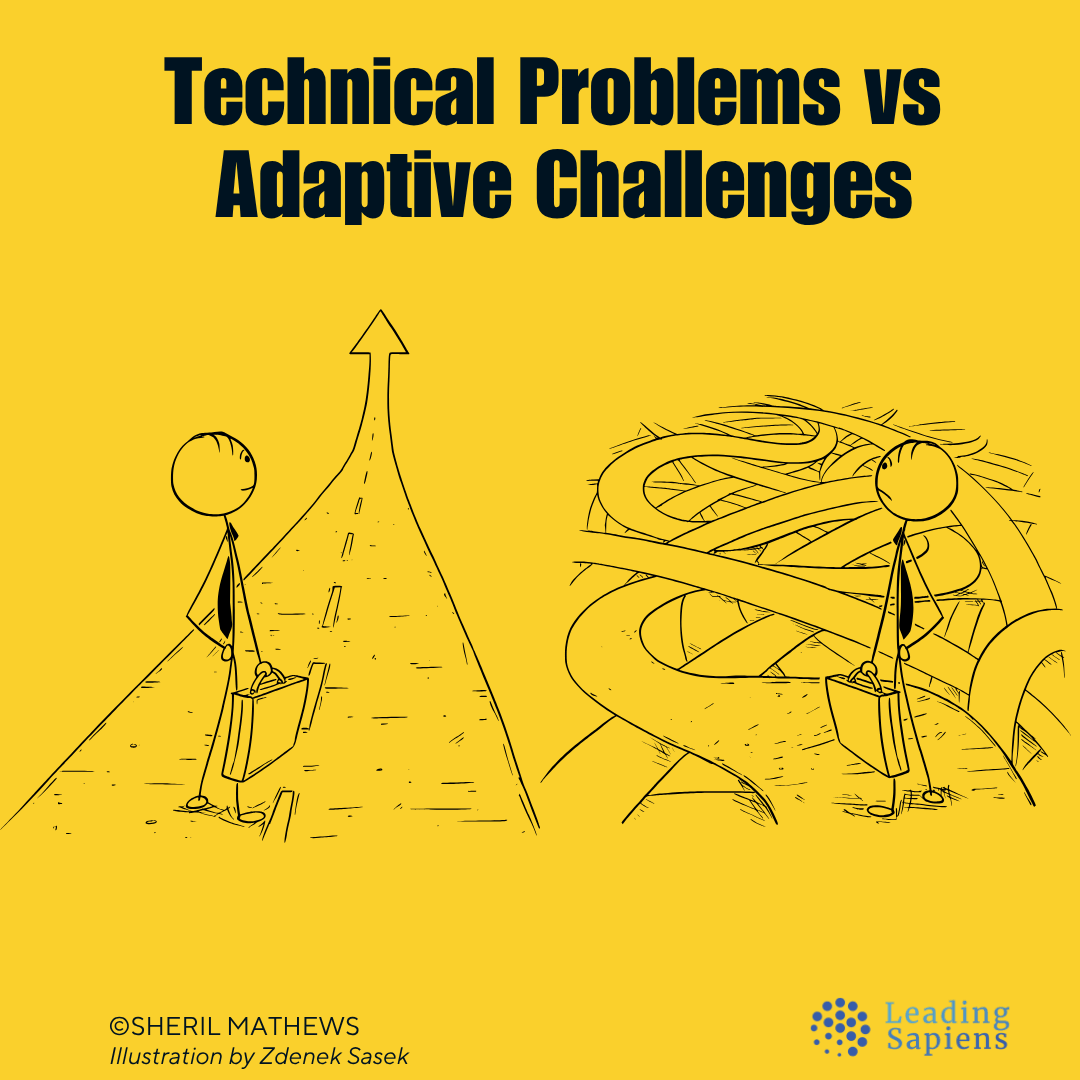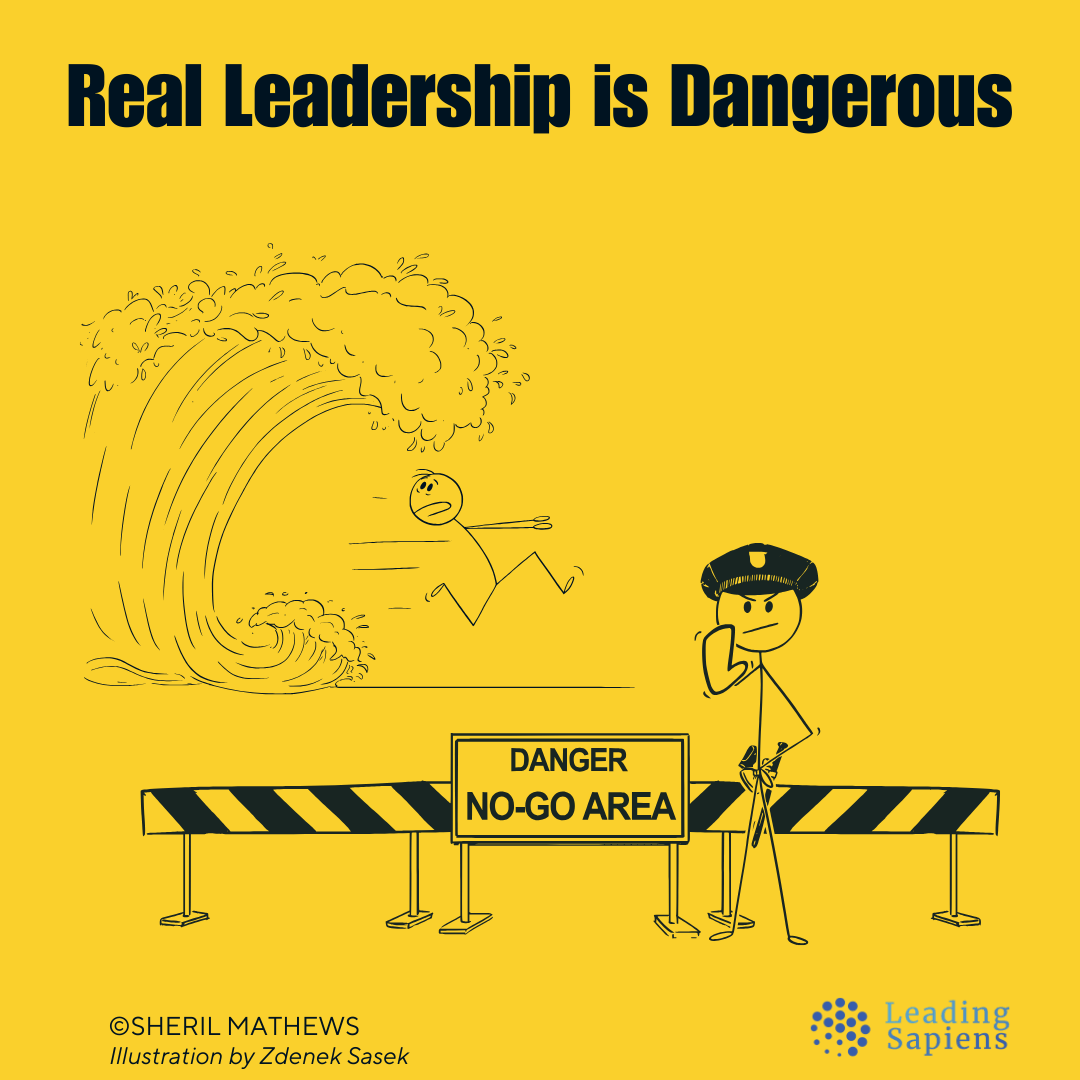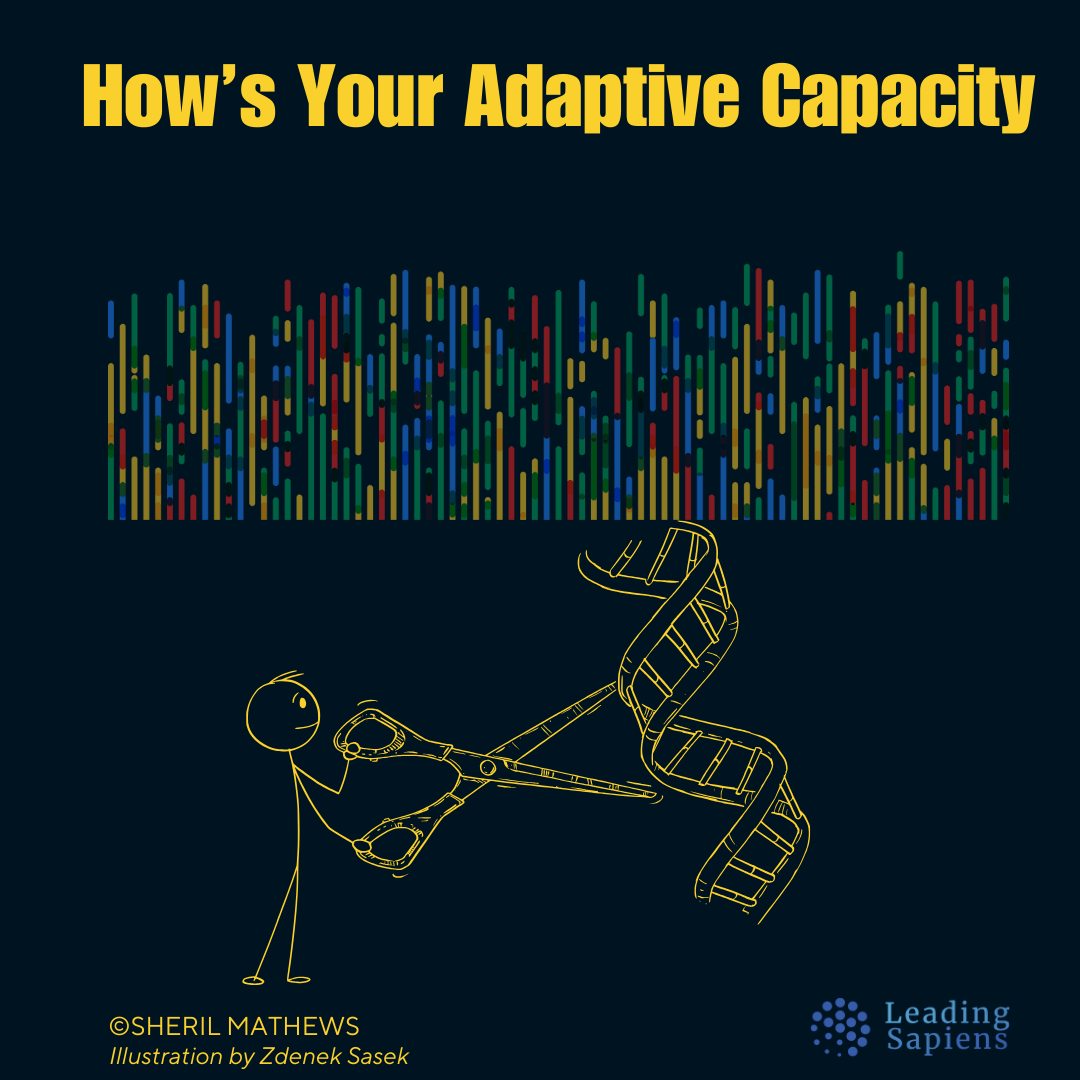The hardest part of adaptive leadership is practicing it when the system pushes back. Over decades of studying leaders in politics, medicine, and business, Ron Heifetz at Harvard found that those who made progress under pressure weren’t relying on brilliance or charisma. Instead, they were executing a set of disciplined behaviors that helped them survive the heat and keep others engaged with the real work of adaptive challenges. These can be called the core practices of adaptive leadership.
Rather than steps in a linear process, they are more like stances leaders keep returning to. What makes them practices is that they can be learned, repeated, and refined. They turn adaptive leadership from a concept into a craft.
This article is the final in a three-part series. The first drew the line between technical and adaptive challenges — why confusing them is the most common leadership mistake. The second defined adaptive leadership itself. This one maps the core practices of adaptive leadership in action. Together, they’re a way for leaders to think and act differently in complexity, when the usual playbooks stop working.
- Practice of Adaptive Leadership
- Diagnose the System
- Regulate Disequilibrium
- Distinguish Leadership from Authority
- Give the Work Back
- Protect Voices Without Authority
Practice of Adaptive Leadership
Because adaptive challenges are fundamentally different, they require a different kind of leadership practice; one that doesn’t rush to solutions, but involves observation, inquiry, and restraint.
Heifetz calls these practices “five strategic principles of leadership” [2]:
1. Identify the adaptive challenge. Diagnose the situation in light of the values at stake, and unbundle the issues that come with it.
2. Keep the level of distress within a tolerable range for doing adaptive work. To use the pressure cooker analogy, keep the heat up without blowing up the vessel.
3. Focus attention on ripening issues and not on stress-reducing distractions. Identify which issues can currently engage attention; and while directing attention to them, counteract work avoidance mechanisms like denial, scapegoating, externalizing the enemy, pretending the problem is technical, or attacking individuals rather than issues.
4. Give the work back to people, but at a rate they can stand. Place and develop responsibility by putting the pressure on the people with the problem.
5. Protect voices of leadership without authority. Give cover to those who raise hard questions and generate distress-people who point to the internal contradictions of the society. These individuals often will have latitude to provoke rethinking that authorities do not have.
…In focusing on immediate problems, a person intent on leading must ask four practical and related questions:
How can he identify an adaptive challenge, keep attention focused on the ripening issue, regulate stress to keep it within a productive range, and take action to promote social learning so that a new equilibrium is reached?
These ongoing disciplines are required for navigating the complex and often uncomfortable terrain of effective leadership. Let’s take a closer look at each practice.
Diagnose the System
Adaptive leadership starts with observation, not action. It’s resisting the urge to intervene before understanding what’s actually at play. Diagnosing the system means learning to see clearly in real time, without getting pulled into the fray.
Heifetz calls this “get off the dance floor and onto the balcony”. That’s where you notice patterns of informal alliances, avoidance behaviors, unspoken roles, and deeper loyalties behind resistance.
The single most important skill and most undervalued capacity for exercising adaptive leadership is diagnosis. In most companies and societies, those who have moved up the hierarchy into senior positions of authority are naturally socialized and trained to be good at taking action and decisively solving problems.
There is no incentive to wade knee-deep into the murky waters of diagnosis, especially if some of the deeper diagnostic possibilities will be unsettling to people who look to you for clarity and certainty. Moreover, when you are caught up in the action, it is hard to do the diagnostic work of seeing the larger patterns in the organization or community. People who look to you for solutions have a stake in keeping you focused on what is right in front of your eyes: the phone calls and e-mails to be answered, the deadlines to be met, the tasks to be completed. [1]
Leaders often operate from a mechanical view where inputs lead to outputs, reporting lines define influence, and success is about fixing what’s broken. But adaptive leadership asks you to suspend that lens and see your organization as a living system.
This isn’t necessarily a root-cause analysis. Instead, you’re watching how the system protects itself from disturbance. What’s being defended? What’s left unsaid? Where is authority being overused, and where is it being avoided?
Instead of a structural lens or strategy, it’s about values in conflict:
- A startup claims to prize innovation, but its decision-making filters every risk through what investors want to hear.
- A reorg is framed as necessary for growth, but beneath it is a battle over turf and visibility.
What looks like dysfunction is often an equilibrium; imperfect, yes, but functional for someone. If you don’t see who benefits from the status quo, you miss the bigger picture.
Diagnosing the system means asking:
- What are the adaptive tensions at play?
- Where are values colliding?
- What loyalties, fears, and narratives are being protected?
And perhaps most importantly: What work is the current dysfunction doing for the system?
Diagnosing the system requires remembering that once people know they’re being observed, they adjust accordingly.
Regulate Disequilibrium
Every adaptive challenge stirs discomfort. People feel the weight of loss — losing habits, status, familiar roles, or their sense of competence. That generates heat: anxiety, resistance, ambiguity, and pushback. But heat isn't the problem. It's the crucible.
Heifetz originally described this individual experience as distress — the anxiety that surfaces when people are pushed into new territory. But there's a systemic dimension too. Disequilibrium is the disruption that ripples through networks, roles, and loyalties when adaptive work begins.
The leader's job is to keep both within tolerable range, and that's where the counterintuitive nature of adaptive leadership shows up.
Push too hard, too fast, and the system shuts down. People revert to habitual roles, conflict turns personal, and learning stops. Back off too quickly, and it reverts to equilibrium. The pressure evaporates, and the urgency to change dissolves.
Regulating means working like a thermostat: adjusting the heat to keep people in the productive zone of disequilibrium where real adaptation can occur. You're trying to stretch without snapping, which requires attention at multiple levels:
- Individual: noticing when people are overwhelmed or shutting down, and creating enough psychological safety for them to re-engage.
- Systemic: watching for signals that the collective is tipping out of balance — too much conflict, or collusion — and intervening to restore movement.
- Yourself: managing your own anxiety first, because how you show up is itself a regulator of the system's temperature.
In practice, this balancing act means:
- Pacing the work. Timing matters. Spread the losses, sequence the wins.
- Framing the challenge. People can absorb more if they understand why the heat is rising.
- Managing your presence. If you show panic, others will escalate. If you collapse, they'll drift.
- Using structure wisely. Temporary routines can hold anxiety so the work can proceed.
Leadership here is counterintuitive. The impulse is to shield people, reduce pressure, and be the steadying hand. But in adaptive work, your job is to maintain it just enough that they stay awake.
The paradox of adaptive leadership is that the distress and disequilibrium people want you to remove is exactly where the work gets done. Your role is to hold them in that tension long enough for genuine adaptation to take root.
Distinguish Leadership from Authority
Most organizations equate leadership with authority. If you hold the role, you're assumed to be leading; if you don't, you're a follower. Adaptive leadership forces a sharper distinction.
Authority is a contract. People give you trust and compliance in exchange for protection, order, and direction. The expectation is simple: solve problems, shield us from uncertainty, and keep things moving. This is why people instinctively turn to authority in a crisis; they want clarity and comfort.
But leadership is different. It mobilizes people to face reality and adapt. It creates disturbance, disrupts habits, and surfaces conflict by drawing attention to the very things people want to avoid. Often, it's the opposite of what authority is rewarded for delivering.
That's why Heifetz calls leadership "dangerous work." It threatens people's sense of competence, belonging, or identity. It also threatens you, because exercising leadership often means disappointing those who rely on you for reassurance.
But this also means adaptive leadership can come from anywhere in the system: a middle manager who addresses a tough reality or a junior analyst who raises a key point. Leadership is not bound to a role; it emerges wherever someone is willing to hold up a mirror and mobilize the system.
For those with formal authority, this creates a constant contradiction. You're asked to provide answers when none exist, expected to lower anxiety when the real work requires raising it, and rewarded for stability even if it blocks progress. Adaptive leadership asks you to navigate that tension.
This means asking:
- What role am I being asked to play here: authority or leadership?
- Am I protecting people from discomfort when exposure is what's needed?
- Am I confusing the absence of authority with the absence of leadership?
You can't abandon authority. But you can't hide behind it either.
Give the Work Back
Authority is seductive. The more capable you are, the more others hand you their problems. And the more adaptive the challenge, the more tempting it is for everyone to make it your job.
Over-functioning is a common trap for leaders. When people look to you for answers, it feels natural — and responsible — to step in, solve the problem, and restore order. In technical situations, that's what's needed. But in adaptive situations, it backfires.
"Giving the work back" is shorthand for resisting the instinct to rescue. It doesn't mean stepping away or withholding support. Rather it’s resisting the impulse to carry what others must learn to hold. Adaptive work can't be done for people. It has to be done by them. If you try to carry it, you rob the system of growth.
This means redirecting responsibility when people hand it to you:
- When a team asks, "What should we do?" reframe it as, "What options do you see?"
- When a group waits for you to resolve their conflict, you invite them to articulate what's at stake.
This process can be frustrating. You may see the problem clearly and have a workable path in mind. But if the system isn't engaged, your clarity won't matter. Solutions imposed too early — or too cleanly — can backfire. They relieve pressure prematurely without producing movement.
This work is difficult because it runs against the grain of authority. People often want protection more than growth, clarity more than complexity. Giving the work back means disappointing them at a tolerable rate — enough to keep them engaged, not so much that they shut down.
The paradox is that real leadership often looks like less action. It's the discipline of holding the mirror without supplying the answer, long enough for people to claim the work as their own.
Giving the work back is an act of faith in the system's capacity to evolve, if you stop shielding it from its own work.
Protect Voices Without Authority
Adaptive challenges rarely originate from the center of power. They tend to appear first at the margins, from people whose perspective is inconvenient, or whose status makes them easier to dismiss.
Dissenting voices are usually the first to see cracks in the system. They question assumptions others take for granted. But because their takes are unsettling, the system moves quickly to silence or sideline them.
One of the obligations of adaptive leadership is to protect these voices — not because they're always right, but because they carry insight that formal structures can't easily access.
Dissent is diagnostic. It reveals where pressure is building.
This doesn't mean elevating every critic or indulging every complaint. It means recognizing that insight comes bundled with vulnerability. Those who speak first about what's not working are often least protected by the system they're trying to improve.
That protection can be as simple as:
- Redirecting attention back to a junior colleague's comment that was brushed aside.
- Slowing down a conversation long enough for quieter voices to enter.
- Ensuring that those on the periphery — contractors, frontline employees, skeptics — are included in key discussions.
- Absorbing the political risk yourself so others can raise what needs to be said.
Doing these in practice is difficult because organizations are skilled at avoidance. They close ranks, ostracize and subtly punish difference.
It's less about advocacy and more about preserving the conditions for truth-telling. Without that, adaptive work stalls. The system recycles familiar narratives, and leadership becomes performance, instead of progress.
By protecting voices without authority, you're not only defending individuals, you're expanding the system's capacity to learn. It's in those marginal insights — the easiest to ignore — that adaptive work begins.
Adaptive leadership doesn't promise to make leadership any easier. Instead, it makes it more honest. It’s about being disciplined enough to do ordinary things — listen, observe, experiment, protect, engage — when everything pushes you toward the familiar territory of authority.
Ironically, in a world obsessed with disruption and transformation, we haven't developed leaders who can actually navigate it. Leadership development operates on the seductive premise of better tools and frameworks that can somehow tame complexity. We're still training people for a world of clear problems and proven solutions, and then wonder why they struggle when faced with adaptive challenges.
Adaptive challenges don't yield to technique. They yield to discipline — the discipline of staying present to what's actually happening, not what we wish.
Related Reading on Adaptive Leadership



References and Sources
- Heifetz, R. A. (1994). Leadership Without Easy Answers.
- Heifetz, R. A., & Linsky, M. (2002). Leadership on the Line.
- Heifetz, R. A., Grashow, A., & Linsky, M. (2009). The Practice of Adaptive Leadership.
- Adaptive Leadership: Making Progress on Intractable Challenges
- The Theory Behind Adaptive Leadership – Cambridge Leadership Associates
- The Work of Leadership – Harvard Business Review





